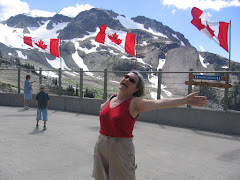From my journal .. a continuation of the last entry of October 9th, about journalism, honesty and compassion ...
Here is one of the questions I've been asking myself:
How do we blend compassion and love with clarity and truthfulness in the stories we write? How do we tell the truth without sacrificing the dignity of the person about whom I am telling the truth?
How do I tell the truth about Leah's life in the slum in a way that empowers her and doesn't hold her up to people's feelings of pity? Or cause her to feel embarrassed about her poverty? Or treat her story as a commodity?
As I reflect on this, my quandry isn't so great in this case. Because Leah is a journalist who knows that we have to bring things to people's attention if they are ever going to change. She invited me to Korogocho willingly.
A week or so before I went into Korogocho, a couple of women from the conference and I went to the Kibera slum, the largest in Nairobi. In this case, we were not invited. And of course, I wanted to write about what I saw. But I didn't. I did take pictures, though. So what made this experience different than the visit to Korogocho with Leah?
The difference was that I was invited to go to Korogocho by someone who lives there. There is a new kind of tourism evolving ... it's called "pro-poor tourism". It's also known as "dark tourism", where people are wanting to see the darker sides of life. For what purpose .. I guess it depends on who you ask. For me, the objective is to learn. And to empathize.
I didn't feel good about being in Kibera. It felt like I was capturing their images without a way to understand the context.
An important moment happened in Korogocho, which summarized the difference for me. We were taking pictures, Frieda and I. With Leah's permission, always deferring to her for direction about when it was alright and when it wasn't. Whenever Leah said "yes, it's fine to take a picture" we would. So I thought we were being sensitive.
Nonetheless, a man stopped us and asked "how does your picture taking help the people who live here?"
This is a critical question -- for journalists, and for everyone who captures another person's image. How does this picture help this person> Or how does this story I am telling help this person?
It was an uncomfortable moment, but I am glad he asked.
A postscript on the "pro-poor" tourism angle --I asked Leah, what is the difference between her taking us into the slum, and somebody else? She said it all depends on the motivation. They are very sensitive about other people making money when the community doesn't benefit. They take a dim view of companies who are doing this, even when they are employing local people who live there to show tourists around. The benefits don't come to the community. I suspect it also sets up issues of jealousy and envy, which is bound to happen in places where everyone is scrambling to get by.
The tourist guidebooks say that any tourist who goes into a slum in Africa is putting themselves in danger and setting themselves up to be robbed. I didn't feel unsafe at all. Then again, I was with someone who lived there, and who is known and respected. That's what makes the difference.
I don't think I'll post a picture with this entry ...
Friday, October 19, 2007
Subscribe to:
Post Comments (Atom)






No comments:
Post a Comment